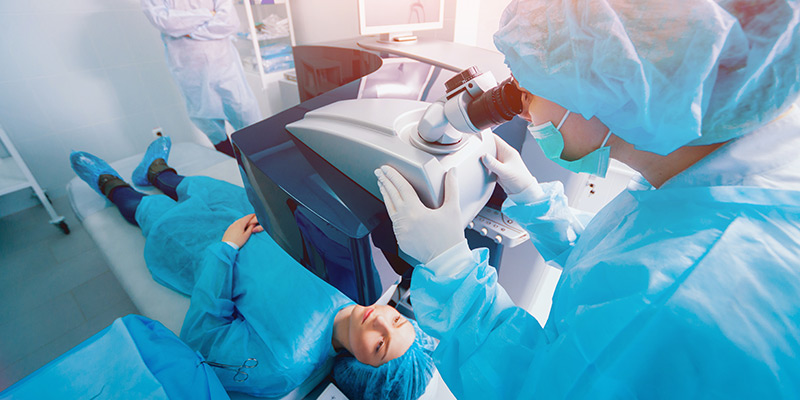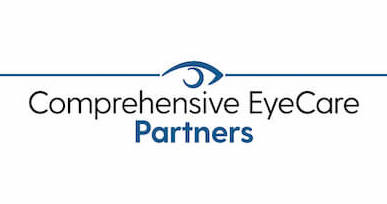LASIK Eye Surgery in Henderson and Las Vegas, NV
Laser-Assisted In-Situ Keratomileusis, or LASIK, has become the leading procedure in the laser vision correction field allowing patients less dependency on corrective lenses. LASIK combines the precision of the excimer laser with the benefits of Lamellar Keratoplasty (LK) to treat wide ranges of refractive needs. In the United States, the excimer laser was first approved for treatment on the “surface” of the cornea which is called Photorefractive Keratectomy (PRK). LASIK consists of making a small hinged flap of tissue and treating the deeper corneal tissue. Laser vision correction has shown faster visual recovery, minimal discomfort, less risk of haze and ease of enhancement (or touch up) without an increased risk of adverse results. PRK is now called ASA, or Advanced Surface Ablation, and yields equal vision outcomes as LASIK, with a slightly improved margin of safety for patients with thin or irregularly shaped eyes. If you are interested in learning more about LASIK in the Las Vegas and Henderson areas, schedule a consultation with our team today.

How Successful is LASIK?
The majority of patients who undergo LASIK are able to see 20/40 or better right away and are able to pass the driver’s license test without glasses or contact lenses. Because some people treated have high degrees of correction and/or astigmatism, it is occasionally necessary to fine-tune or enhances the primary treatment to obtain the best final result. Statistically, each patient has about a 95% chance of only requiring a single treatment to achieve their desired visual outcome. Approximately, less than 5% return to the laser for enhancement of any residual astigmatism, or a slight over or under-correction. “Since having the surgery, I don’t have to worry about having my glasses slip down my nose while working out at the gym.”
How is LASIK Performed?
LASIK is a painless procedure performed in an outpatient setting with topical anesthesia. The eye drops are used to completely numb the eye but not the eyelids. The eyelids are held open with a small instrument to prevent blinking. The patient feels the sensation of the instruments around the lid area but does not feel any pain. A suction ring is placed on the eye and the patient feels a little pressure while the vision goes dim for a brief period of seconds. A microkeratome slides across the cornea in less than 15 seconds to create a thin lamellar corneal flap. After proper alignment, the high-energy pulses from the excimer laser are delivered to reshape the surface. By adjusting the pattern of the laser beam it is possible to treat myopia, hyperopia, and astigmatism. After the laser treatment has obtained the proper contour the corneal flap is replaced in its original position. A protective eye shield is placed over the eye and worn for the first 12 to 24 hours as well as when sleeping for the next 3 to 4 days. The cornea has rapid healing qualities and no sutures are needed. However, fluctuation in vision and intermittent dry eyes is not uncommon for the first several weeks and months. Postoperative recovery is quick and easy. Most patients feel minimal to no eye irritation during the first two hours and many patients see a dramatic improvement in vision by the first day. However, fluctuation in vision and intermittent dry eyes are not uncommon for the first several weeks.
Who is a Good Candidate for LASIK?

To determine if you are a good candidate, a thorough eye exam should be performed. In general, an ideal candidate is over the age of 18, with stable refraction and healthy corneas. People with eye diseases like keratoconus, cataracts and some types of glaucoma, as well as patients with certain medical conditions and women who are pregnant, may not be good candidates. However, patients who may not be good candidates for LASIK may benefit from other refractive procedures like clear lens replacement and implantable contact lenses. (ICL)
Realistic expectations are also important to determine if you are a good candidate. The decision to have laser vision correction must be made based on facts, not hopes and misconceptions. The goal with Laser Vision Correction is to reduce your dependency on contact lenses or glasses. In the majority of cases, good useful vision is obtained with a single treatment or with an enhancement. Therefore, a patient under the age of 40 often performs all activities without glasses. Unfortunately, LASIK cannot correct a condition known as “presbyopia.” This condition affects everyone around the age of 40 causing a decrease in the ability to see or read up close without glasses. Therefore, if a patient’s vision is improved for the distance they may find an increased dependency on glasses for near work or reading. Leaving a little nearsightedness in one eye can help this condition. This technique is called monovision. It is important to discuss all of these options with your doctor.
What Can I Expect After LASIK?
Many patients are somewhat nervous before the procedure so a sedative to alleviate anxiety is given. This also relaxes you so that you are able to go right home and go to sleep, at least for a few hours. Don’t expect your vision to be clear on the first day. It’s somewhat like looking underwater. Since the flap is repositioned by floating back into place, a minor amount of swelling occurs. Plus, we protect your eyes with plastic shields which can also blur your vision. But, after a good night’s rest, most patients are ecstatic with their new vision. You must then use antibiotic drops and mild steroid drops for the next few days and lubricating drops as needed for the dry eye feeling.
What About Dry Eyes After LASIK?
Dry eye symptoms are the most common complaint after LASIK. Everyone has dry eyes after surgery, but some notice it more than others. In this type of laser vision correction, a thin corneal flap is created on the surface of the eye. When the flap is made, the abundant supply of corneal nerves is also cut. This results in a partially anesthetized corneal surface. It requires 3-6 months for these nerves to re-grow and provide the cornea normal sensation. As a result, the normal tear production is also interrupted and everyone experiences some degree of dryness, especially the first 2-4 weeks. There are numerous artificial tears and lubricating drops available as over-the-counter products. We initially recommend the preservative-free products to prevent any unnecessary toxic response. But, as your eyes improve, switching to the more convenient bottles of preserved products is allowed. If the frequent use (at least every hour) of artificial tears does not improve your symptoms, then temporary or permanent closure of a tear duct can provide added relief. Since this is a temporary condition (3-6 months) in most cases, many patients do extremely well by simply lubricating their eyes with artificial tears. Restasis, a new prescription drop for the treatment of Dry Eye, is useful in select patients.
How Do I Know if I Need an Enhancement?
The schedule of routine post-op visits includes a one day, one month and 3-month visit. Since the vision may fluctuate as the cornea heals, we recommend waiting a minimum of 3 months to reevaluate your visual results.
When we reevaluate, we look at such things as your vision without glasses and your prescription where we measure any residual astigmatism or mild over or under correction. We ask about your nighttime driving and your reading vision. If your vision is not as good as you think it should be, and if there is a minor residual correction that can be treated with the laser, then an enhancement is discussed. Enhancement surgery is actually easier than the initial procedure because a flap is already present. In most cases, the surgeon simply identifies the edge and lifts up the original flap without cutting a new one. Because the cornea heals this layer very slowly, it can easily be lifted up to 1-2 years after surgery. In some instances, surface ablation is required and your surgeon can explain why it might be best in your particular situation. However, the healing process is the same and requires another 3 months to determine the final result. With a little patience and plenty of artificial tears, the surgeons at Shepherd Eye Center in Henderson and Las Vegas will do everything in their power to help obtain the best, most functional vision possible. Our bottom-line is quality vision and your satisfaction.



